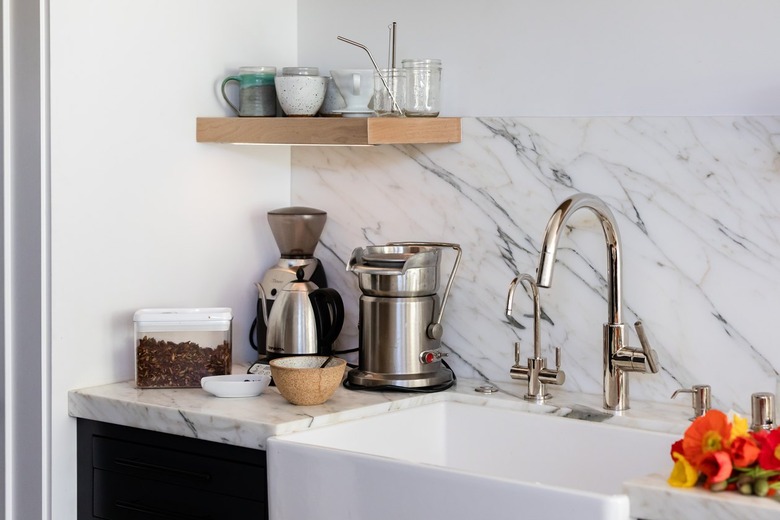How To Clean A Drain With Baking Soda & Vinegar
Vinegar and baking soda team up to creating an expanding fizzy foam, as demonstrated in so many elementary-school science projects. What these science students may not know is the same reaction also has the ability to clear a clogged drain pipe. Hot water afterwards helps flush the pipes of any remaining residue.
Baking Soda and Vinegar Drain Cleaner
Baking Soda and Vinegar Drain Cleaner
Clearing a clogged drain pipe doesn't always require harsh chemicals. Hot water, vinegar, and baking soda do an excellent job in many situations.
No matter what, though, do not use a homemade drain cleaner right before or after using a chemical-based cleaner, as these could cause a dangerous reaction that creates harmful fumes. The pipes must be clear of any type of drain-cleaning solution before trying another.
To make the foaming drain cleaner, put a tea kettle full of water on to boil. While it's heating up, pour 1/2 cup to 1 cup of baking soda into a cup or bowl. Mix 1 cup each of white vinegar and hot tap water in a separate container, setting them aside until the kettle boils. The ratio of baking soda to vinegar to clean drains isn't an exact science; if there's enough of each to create foam, the mixture has the power to clean a drain.
Pour the boiling water down the clogged drain pipe first, followed by the baking soda. It's okay if some of the baking soda doesn't make it directly down the drain, as it can be washed down with the vinegar. Pour the vinegar and water mixture after the baking soda, then close the drain with its plug. Wait 5 to 10 minutes and boil another kettle of water during this time. Remove or open the drain plug, then pour the boiling water down the drain.
How It Works
How It Works
The baking soda and vinegar solution works in similar fashion to some commercial foaming drain cleaners, but without the harsh chemicals. When baking soda and vinegar combine, they react, creating water and carbon dioxide. Carbon dioxide bubbles through the liquid in the drain, just as it does in a carbonated beverage. The bubbling action helps loosen any materials blocking portions of the pipe.
The boiling water used before and after the baking soda and vinegar is hot enough to soften greasy, fatty buildup, such as soap and shampoo residue or cooking oil, which helps shrink it a bit and flush it out of the pipe. The boiling water also creates pressure to push the gunky clog out of the way, assisted by gravity.
Keeping Pipes Clear
Keeping Pipes Clear
Baking soda and vinegar come in handy to help keep the pipes clog-free, too. Every few weeks, or whenever the water seems slow to drain, pour 1/2 cup baking soda in the drain, followed by 1/2 cup vinegar. Plug the hole, then unplug it after 1 hour. Pour boiling water down the drain after that to help clear greasy substances.
Running hot water after a shower or after washing dishes also helps keep pipes clear, as the hot water loosens any greasy residues that may eventually lead to a clog. Pour a bit of baking soda or vinegar in the drain at least once a week to help cut down on odors. After an hour or so, pour hot water down the same drain. Vinegar's acidic properties also help break up some types of gunk that could clog drains.
